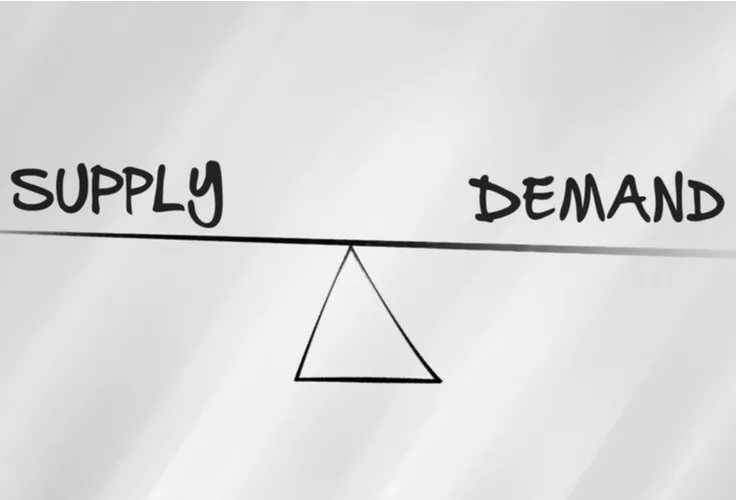Weather’s Chilling Impact on Winter Logistics Strategies
Unless you’re a weather channel enthusiast, and who isn’t these days, you know managing winter logistics strategies takes more than business as usual strategies.
A recent article in FreightWaves noted the cumulative impact of weather events in 2024, costing global supply chains $100 billion. What will 2025 bring?
Winter Logistics Challenges Amid Extreme Weather
Economist Impact noted the escalation of extreme weather, and stated these kinds of events now occur every three weeks, when four decades earlier one occurred every four months.
Nonetheless, logistics companies are in the business of navigating whatever weather dishes out, but there are instances of putting workers, equipment, and facilities in harm’s way. It isn’t just about the hazardous conditions from November through March, but the increase in scope is troubling.
Winter Weather’s Worst Offenders
Severe winter weather can freeze warehouse operations for myriad reasons: delayed transport of goods, power outages affecting temperature-sensitive product storage, and building operability.
In the face of adverse weather events, public and private sectors often work together to mitigate risks and restore infrastructure after the damage is done. The most common causes of supply chain disruptions in the winter months include:
- Transportation delays – road closures, traffic congestion, flight delays…
- Inventory management challenges – stock outs, damaged product due to freezing temperatures, warehouse power outages
- Labor challenges – temperature-related safety concerns, reduced workforce availability, more overtime hours, and compensation claims due to weather related accidents.
Health and safety concerns.
In addition to affecting retail, agricultural, chemical, and construction product quality and stability, freezing temperatures can compromise the health and safety of workers. Facility floors and surrounding concrete can get slippery, increasing risks of falls, even when recommended jobsite practices are followed.
A new study published in the Journal of American Medicine (JAMA) points out the dangers of freezing temperatures to human health and mortality. Added exposure to the bitter cold can bring on hypothermia, frostbite, and heart issues.
Inaccessible routes.
Relentless wind and other blizzard conditions can create impassible roads, closed tolls, and downed power lines dictating widespread transportation shutdowns, resulting in end-to-end supply chain disruptions. The delays reduce carrier availability, extending preplanned transit times, increasing demand from customers and every touchpoint along the value chain.
Panic-buying.
To overcompensate the shortage, consumers and businesses may turn to other retailers and wholesalers that may work with 3PL partners not impacted by the severe weather, or search for supply stored in other areas of the country not affected by the same conditions.
Winter can be an unrelenting season for companies ill-prepared and speaks to the virtues of having sourcing and 3PL provider alternatives to combat both expected and atypical incidents of the season.

Winterizing Supply Chains
Overcoming the winter season’s challenges comes down to a combination of doing what you can ahead of time, anticipating best and worst-case scenarios, and having solutions available to deploy at a moment’s notice. This may seem like common sense. It is. But complexities can appear without warning, which is why readiness is a winter weather strategy deserving extra attention.
Here’s what you need.
Winter Preparedness and Feasible Forecasting
By leveraging the power of innovation in storage facilities, for example, information flows across supply chains in real time ensuring warehouse management systems (WMS) and inventory management systems (IMS) work in sync. These technology platforms can’t change the weather, but with WMS and IMS, you can make SKU and distribution adjustments on the fly.
Logistics Strategies for All Seasons
For manufacturers, extreme weather events throughout the year could spur seasonal inventory strategy refreshers. It might also be a good time to revisit JIT (Just in Time) and JIC (Just in Case) methodologies when assessing warehousing costs and capabilities.
To help avoid stockouts, options may include adding other inventory management strategies: ROP (reorder point), SS (safety stock), or BS (buffer stock) to stay alert on product shortages and minimize downtime during weather-related disruptions.
Historical data and predictive analytics play significant roles in enhancing demand forecasting processes by including weather pattern metrics across different parts of the country. Collectively, it creates a documented display of regions most at risk, allowing you to consider other locations to store products and mull over new logistics routes.
Working with an experienced 3PL provider with a wide distribution network and multi-node capabilities gives businesses reliable advantages.
However, if you decide to handle winter logistics planning on your own, there are forecasting tools to help you plan for the next week. But would you have the resources needed to make quick corrective pivots and continue to meet your business commitments?
Real-Time Visibility and Agility Help
Ever notice how the more resources you have at your fingertips, the more versatile your operations become? Agile environments prompt flexible solutions generating greater efficiency, even under the backdrop of hazardous climate conditions.
Once product inventory levels and their storage locations are identified, real-time visibility kicks in. Transportation management systems (TMS) can provide alternate shipments and routes to move goods and materials away from inclement weather and circumvent current carrier shortages.
In addition to these technologies, WSI and our customers consistently rely on real-time visibility and the actionable data it provides to enable rerouting, load balancing, and better decision-making, no matter what Mother Nature throws our way.
3PL Providers’ Winter Logistics Solutions
A company can have all the bells and whistles automated systems bring, but without experienced logistics people in place, the benefits can fall short.
A reputable 3PL partner can help develop your contingency plans for weather-related disruptions. From strategically placing inventory in locations tightening distance to end-markets or introducing best practices for equipment use in winter months, it’s all part of what you can expect from your third-party logistics provider.
WSI’s full suite of technologies and customer-centric approach promotes collaborative communities between customers and strategic partners, resulting in seamless operations optimizing product flows.
And because WSI makes worker safety a top priority, customers can count on 3PL partnerships that safeguard products, people, and your brand integrity, even when the clouds roll in. Plus, when extreme weather does hit, having clear communications and up-to-date notifications keeps everyone on the same page, making solutions easier to find and implement.
Start winterizing your business and ask how we can help you get ready for every season.

About the Author

Mikayla Josefchuk
Mikayla Josefchuk is WSI’s Inside Sales and Marketing Representative, providing customers with insights on tailored supply chain solutions including warehousing, transportation, and eCommerce fulfillment. A business school graduate of the University of Missouri – Columbia, Mikayla focuses on business development and content creation. When she’s not at work, Mikayla spends her time on walks with her dog, Boone.








